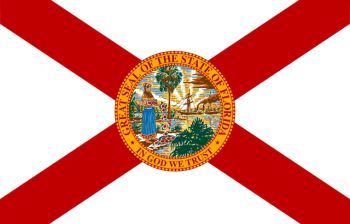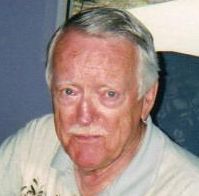
Publisher:
Bonnie King
CONTACT:
Newsroom@Salem-news.com
Advertising:
Adsales@Salem-news.com

~Truth~
~Justice~
~Peace~
TJP
May-21-2013 18:32

 TweetFollow @OregonNews
TweetFollow @OregonNews
A Paean to the Hurricane Industry... A Story of Survival
Bill Annett Salem-News.comThe Republican platform promises to do better. I don’t think they have done so bad. Everybody’s broke but them. - Will Rogers
 Courtesy: redstate.com |
(DAYTONA BEACH, FL) - (Editor's note. - Conventional wisdom has it that Florida is a Red State, an enclave of old geezers who are entrenched conservatives, as right-wing as Todd Bertuzzi of the Detroit Red Wings. More significantly, it is contended, Florida is a dysfunctional constituency because of the demographics, and ergo the residual geriatric dementia. Ballots are spoiled in the unaccustomed pressure of poll-going, coupled with the ancient urge to vote for the remembered party of Bob Taft, Spiro Agnew and the two beloved birds in the family Bush. The resulting detritus of destroyed ballots in the inconvenient war against Al Gore - almost an aeon en retard - rendered it necessary for the Supreme Court to rescue the process and to restore judicial order by declaring the proper right-wing outcome, which the learned judges did at the request of Florida's Republican attorney general. Mission accomplished.)
In actual fact, entrepreneurs, venture capitalists and upwardly mobile private equity companies (a.k.a. brain capital) have tough sledding (no double entendre intended) in the Sunshine State. It's too hot for heavy industry, too swampy for land plays, and because of the demographics just mentioned, old codgers tend to impede the “headwinds,” the “catalysts” and indeed the “footprints” that proliferate in the platitudinous bons mots of those gurus who comment daily on the nation's business.
So the entrepreneurial opportunities in the State of Florida are limited to (1) fallout from NASA, which is largely spoken for, (2) tourism, which tends to be self-liquidating, since the customer base tends to take root, which provides (3) the retirement industry itself which, by the time it happens, further cancels itself out because the “grey and slippered” clients, accreting in a sort of elephant graveyard with their 1985 Lincolns Continental, have no residual dough left.
But of late, a new opportunity has appeared, fanned by the winds of an altered planet, thanks to the formerly deposed Al Gore, and a manque media desperately trying to find something to talk about: the Hurricane Industry. The resource of this macroeconomic movement is infinite and as self-perpetuating as the earth's climate. It sells itself through fear and foreboding, and it's bolstered and holstered by technology, seasonal demand and unlimited retail opportunity. It is The Perfect Storm. Or rather, the perfect industry, rooted in the human storm.
And it's highly topical as well as tropical, because as this is written the annual version is just a few days away. Between June 1 and November 30 each year the Hurricane Industry works like this:
Atlantic hurricanes do one of two things, about 99% of the time. (1) They come in over the Bahamas, and then swing north, give Jacksonville the back of their hand, and bounce off the Carolinas, before heading for Ireland. Or, (2) they come through the Caribbean, occasionally tag Miami and Homestead, a small burg built of manufactured houses as flimsy as the house of straw in the bad wolf story, (but occupied by Floridians as resilient as Kansas farmers, rebuilding after every tornado or crop failure).
Most often, the hurricane, with gathering enthusiasm, proceeds into the Gulf, temporarily disrupting BP, Exxon and the other behemoths operating offshore rigs, (which are accordingly compensated with subsidies and tax relief by a grateful Federal Government) before threatening New Orleans, where the Army Corps of Engineers is perpetually at work building insufficient dikes, in order to ensure that The Big Easy remains as under water as a typical AIG mortage-backed security.
That's it. The whole picture, in a typical year, for the Florida Hurricane Industry.
So where is the logical, loss-proof and therefore lucrative area for a profitable Hurricane Industry to operate? You got it – Central and North Florida, where never is heard – or rarely, say once every 70 years – a discouraging word about tropical depressions. And the skies are not cloudy all day.
First, a word about the prophets, before we get to the profits. Central is the National Hurricane Center, based in Miami, but the NHC tends to be guided by the prognostications of an expert academic team in far-off University of Colorado, (like Hemingway criticizing Field Marshal Montgomery from a safe distance) which annually comes up with a fearless prediction. Typically, the prognostication is something like “there will be 20 named storms, eight hurricanes, of which three will be major and make landfall.” It's presumed that the landfall will be on the Florida peninsula, because it protrudes like a phallic appendage into the Caribbean (I never could spell that thing) area and the Atlantic.
To arrive at this conclusion, this team employs a discipline known as “hindcast.” You all know what “forecast” is. Hindcast is merely the prediction of something that has already happened. Take a situation in 1950, when factors such as Atlantic water temperature, wind velocity and direction (and whether the zodiac was in agreement) and where the result was a great bloody hurricane. Now if those factors replicate in 2013, why there you go - the hindcast is for a great bloody hurricane in 2013. That's all there is to this hurricane prediction business, rooted in hindcast.
Hindcasts and prediction of the number of storms are issued in April or May every year. (See above for this year's hindcast.) Then they're revised downward in August. Then they're revised downward again in October. By the end of November, with the end of the hurricane season, nobody is interested any longer. They're shopping for Thanksgiving already.
Before we get to the Preparedness Sub-sector of the Industry, one of the biggies, we should talk about the incidence of hurricanes in Central Florida, the locus of our thesis. I can tell you. I've been through it. From the perspective of my first arrival in Daytona Beach in 1991, there had been no noticeable landfalls in about 50 years. Each year, I watched with amazement the campaign, seemingly launched by insurance companies, grocery retailers and window shutter johnnies, each June-November half-year, over fear of impending hurricanes. Nada.
Except, of course for my creeping insurance premiums, indexed for inflation, of course. Finally, in 2004, just as the ancient ones were engaged in yet another ballot-burning and sinking John Kerry, the hindcast and prediction came true, like a stopped clock which is dead-on every twelve hours.
Visitors to Daytona that year included Hurricanes Charley, Francis and Jeanne. They actually hit us. In the nine years since, of course, somnolence has reasserted itself, although the Hurricane preparedness boys, urged on by far-off University of Colorado, are louder than ever.
So let's talk about Charley. He started into the Gulf, then took a hard right at Fort Meyer and came straight up Interstate 4. My bride and I evacuated to our friendly neighborhood church, which I figured had to be the best possible shelter from a stormy blast, although I hadn't been in Sunday School for 75 years. It worked. Seven miles from the epicenter, as Charlie hung a hard right onto International Speedway Boulevard and jumped off the Main Street Pier into the Ocean, my palatial manufactured house didn't register a scratch.
My power was out for 12 hours, so that I had neither heat nor A/C. In September in Florida, you don't need either. For 24 hours, I was compelled to use my cell phone until the land line was reconnected. End of privation and state of emergency. I did not need the 36 cans of pork and beans, the case of sterno, three boxes of flashlight batteries and the six gallons of bottled water that were the major components of the survival kit I had been forced to assemble through weeks of advertising by the Storm Brewers and by peer pressure.
That was the end of The Big One, the First in 65 years. Except, of course that my insurance premium quadrupled.
Hurricane Francis was just as deadly, except that it traveled northwest instead of northeast. It landfell close to West Palm where it wreaked havoc, wreaking a neighbor's jacuzzi onto the Cadillac of a friend of mine, causing havoc at Geico.
Hurricane Jeanne was the mildest direct hit. On the TV in the masonry motel we'd evacuated to this time around, I watched Jim Cantore, the now-famous meterologist, clad in parka and mukluks and bracing himself against the gale on windswept Daytona Beach, fearlessly providing on-the-spot coverage, in the best dare devil journalistic tradition of Ernie Pyle or Bill Maulden. Meanwhile, in the background, three or four thoughtless kids, who didn't realize they might have only minutes to live, played with their boogie boards in the pounding surf.
I gave my survival kit to the Salvation Army, except for two batteries. I still have to walk the dog at night despite rain or sleet or whatever.

Bill Annett grew up a writing brat; his father, Ross Annett, at a time when Scott Fitzgerald and P.G. Wodehouse were regular contributors, wrote the longest series of short stories in the Saturday Evening Post's history, with the sole exception of the unsinkable Tugboat Annie.
At 18, Bill's first short story was included in the anthology “Canadian Short Stories.” Alarmed, his father enrolled Bill in law school in Manitoba to ensure his going straight. For a time, it worked, although Bill did an arabesque into an English major, followed, logically, by corporation finance, investment banking and business administration at NYU and the Wharton School. He added G.I. education in the Army's CID at Fort Dix, New Jersey during the Korean altercation.
He also contributed to The American Banker and Venture in New York, INC. in Boston, the International Mining Journal in London, Hong Kong Business, Financial Times and Financial Post in Toronto.
Bill has written six books, including a page-turner on mutual funds, a send-up on the securities industry, three corporate histories and a novel, the latter no doubt inspired by his current occupation in Daytona Beach as a law-abiding beach comber.
You can write to Bill Annett at this address: bilko23@gmail.com
 |
 |
 |
Articles for May 20, 2013 | Articles for May 21, 2013 | Articles for May 22, 2013

googlec507860f6901db00.html
Salem-News.com:



Terms of Service | Privacy Policy
All comments and messages are approved by people and self promotional links or unacceptable comments are denied.
[Return to Top]
©2025 Salem-News.com. All opinions expressed in this article are those of the author and do not necessarily reflect those of Salem-News.com.